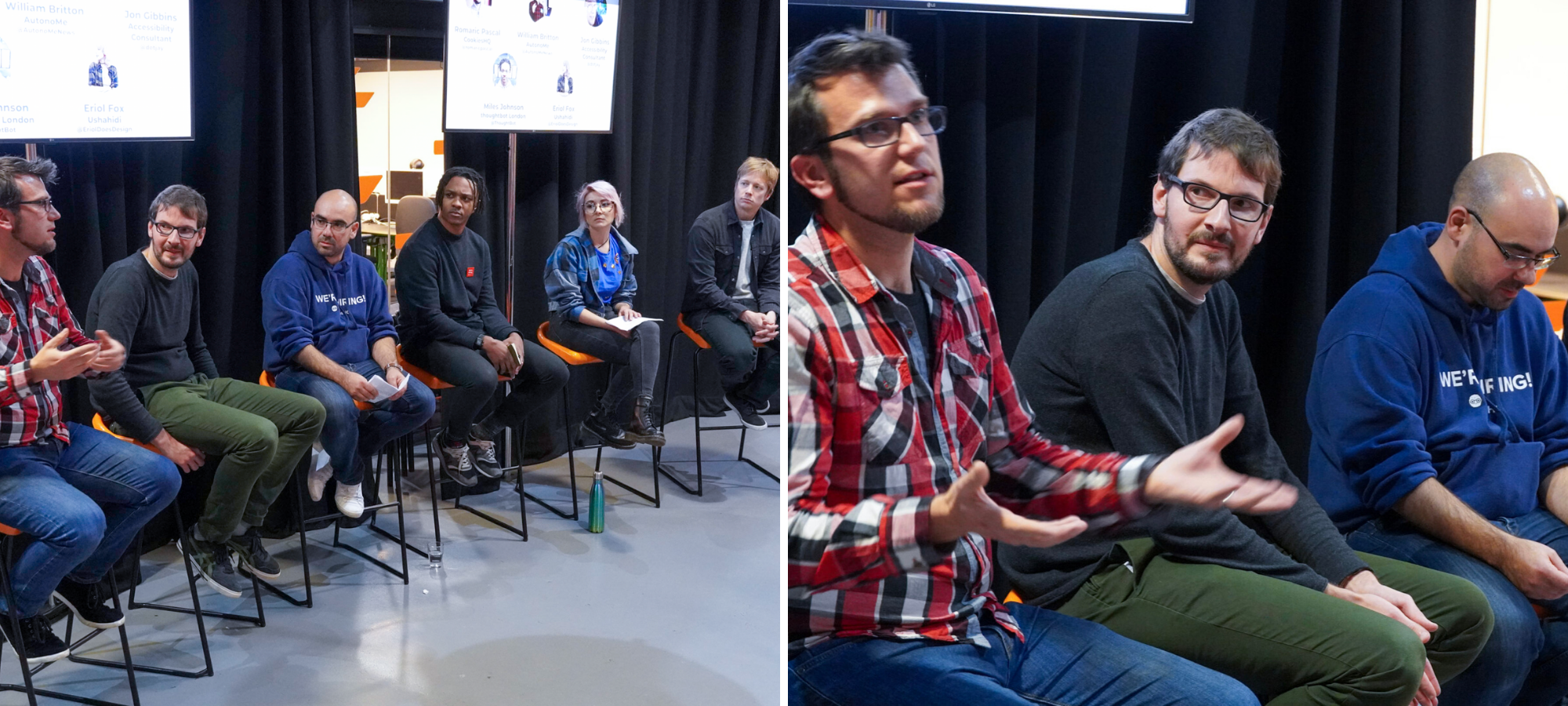This week, we hosted our 10th Smart Cookies event in The Engine Shed as part of the Bristol Technology Festival 2019.
We focussed our event around the subject of accessibility. In an age where technical products are penetrating most areas of our lives, it is as important as ever to make sure that they are accessible for all. Indeed, technical products have the power to open up communities and link individuals to modern society, however, they can also leave people feeling isolated and left behind. You can read more about this here.
1 in 5 people in the UK have a disability.
National Statistics, Family Resources Survey
We traditionally think of accessibility as being an issue for developers and designers. Romaric Pascal, front-end developer at CookiesHQ, set the record straight by kicking off the event. He delivered a fantastic talk about what accessibility means for web development and how it involves the whole team, from developers, stakeholders and project managers to designers, content creators and testers. You can view his presentation slides here. His key takeaways were:
- When implementing new product features, we should be mindful of accessibility. Especially with 18% of working-age adults having a disability in the UK.
- When it comes to design, is your layout consistent and ready to zoom?
- Be careful when it comes to animations, for example, ones that are flashing for individuals with epilepsy.
- HTML semantics are crucial for good accessibility. Developers can complement them with ARIA to provide even more meaning to browsers and assistive technologies
- You don’t need to overwhelm yourself with such a vast topic. Improve the accessibility of your product little by little, one day at a time.

After a short break of networking, drinks and food (cookies were provided), Nic (Co-founder and CTO of CookiesHQ) hosted a panel discussion. He was joined on the panel by Romaric Pascal, William Britton founder and CEO at AutonoMe, digital accessibility consultant Jon Gibbins, Miles Johnson a designer at thoughtbot London and Eriol Fox, design lead working at Ushahidi.
The panel spoke about inclusivity, diversity and accessibility and whether there was a line to be drawn between these concepts or whether they are blurred. The panel then discussed the ways that we can signpost accessibility issues. Indeed, the panel agreed that a solution should be found that can work for all stakeholders in a company, and not necessarily equate to a costly “added value” when making a product accessible. It was bitterly agreed that time and money constraints meant that accessibility sometimes had to be de-prioritised however, all companies should be making reasonable adjustments to improve their products.
“As a designer, learn as much as you can about #Accessibility and #Inclusion. Use the power of open source communities to learn. It’s hard to learn it later”
Eriol, design lead at Ushahidi
When asked whether the panel had any examples of organisations that “do” accessibility well, a few were mentioned. Including Lemon Tree who hired thoughtbot to develop a web platform for food ordering, and put inclusion first as their target clients did not necessarily have access to smartphones. Other companies mentioned were Barclays and Lloyds, who make their workplaces accessible to people with mental health issues.
An interesting question at the end was asked: “How can I make graphs and diagrams more accessible?” The panel agreed that this was tricky, however, there were some things to look out for. For example, labelling lines as people who are colour blind would not be able to see and tell them apart (1 in 12 men are colour blind) or adding different shapes to the data lines. They also recommended to look at infographics or to present data in a table rather than only presenting data in a graphic.
